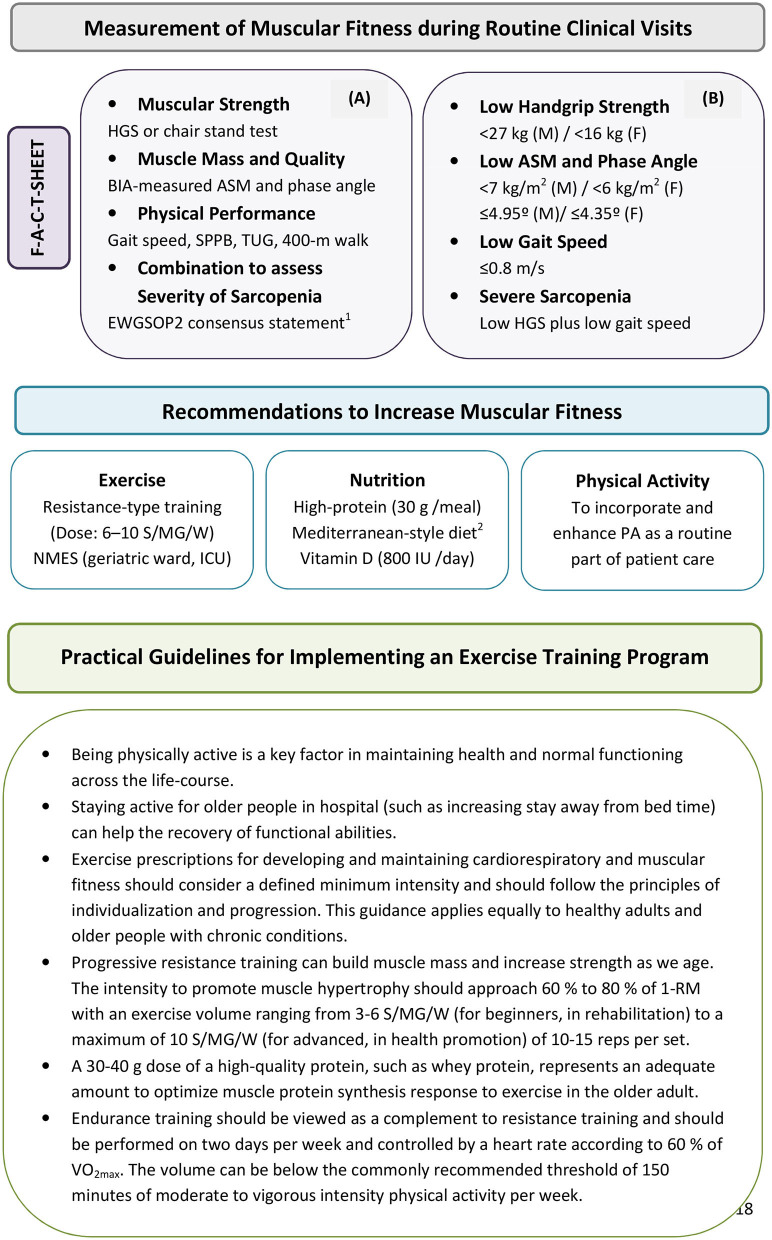Figure 1.
Procedures for incorporating muscular strength and function estimations into routine clinical assessments in a pragmatic manner (A) for identifying patients at risk for low muscular fitness in secondary care. (B) Recommendations listed in figure provide practical guidelines that should be considered in the implementation of an exercise and physical activity program. The steps of the pathway are represented as Find-Assess-Combine-Treat or F-A-C-T [modified by Cruz-Jentoft et al. (2018)]. EWGSOP2 recommends for case-finding the use of the SARC-F questionnaire as a screen for sarcopenia risk (Malmstrom et al., 2016). 1Cruz-Jentoft et al. (2018); 2Capurso et al. (2019). ASM, appendicular skeletal muscle mass; BIA, bioelectrical impedance analysis; EWGSOP2, European Working Group on Sarcopenia in Older People 2; F, females; HGS, handgrip strength; ICU, intensive care unit; M, males; MD, mediterranean diet; NMES, neuromuscular electrical stimulation; PA, physical activity; S/MG/W, sets per muscle group per week; SPPB, Short physical performance battery; TUG, Timed-up-and-go test; 1-RM, one-repetition maximum; VO2max, peak oxygen uptake.

